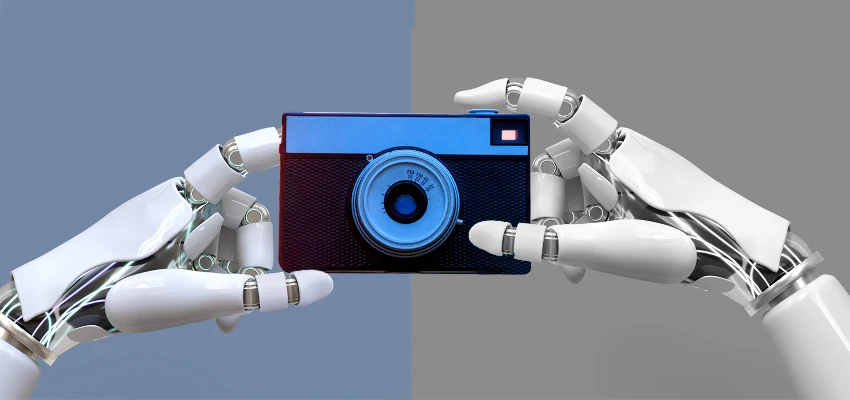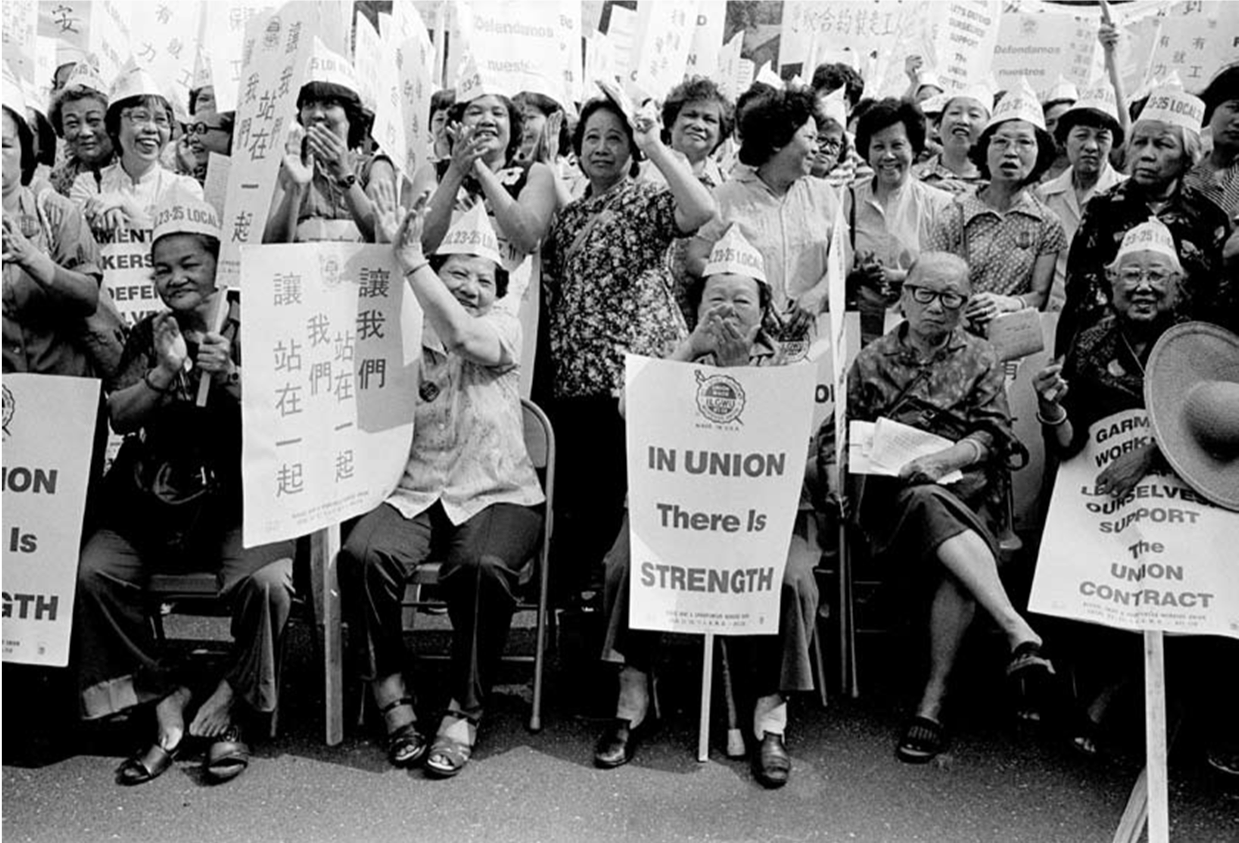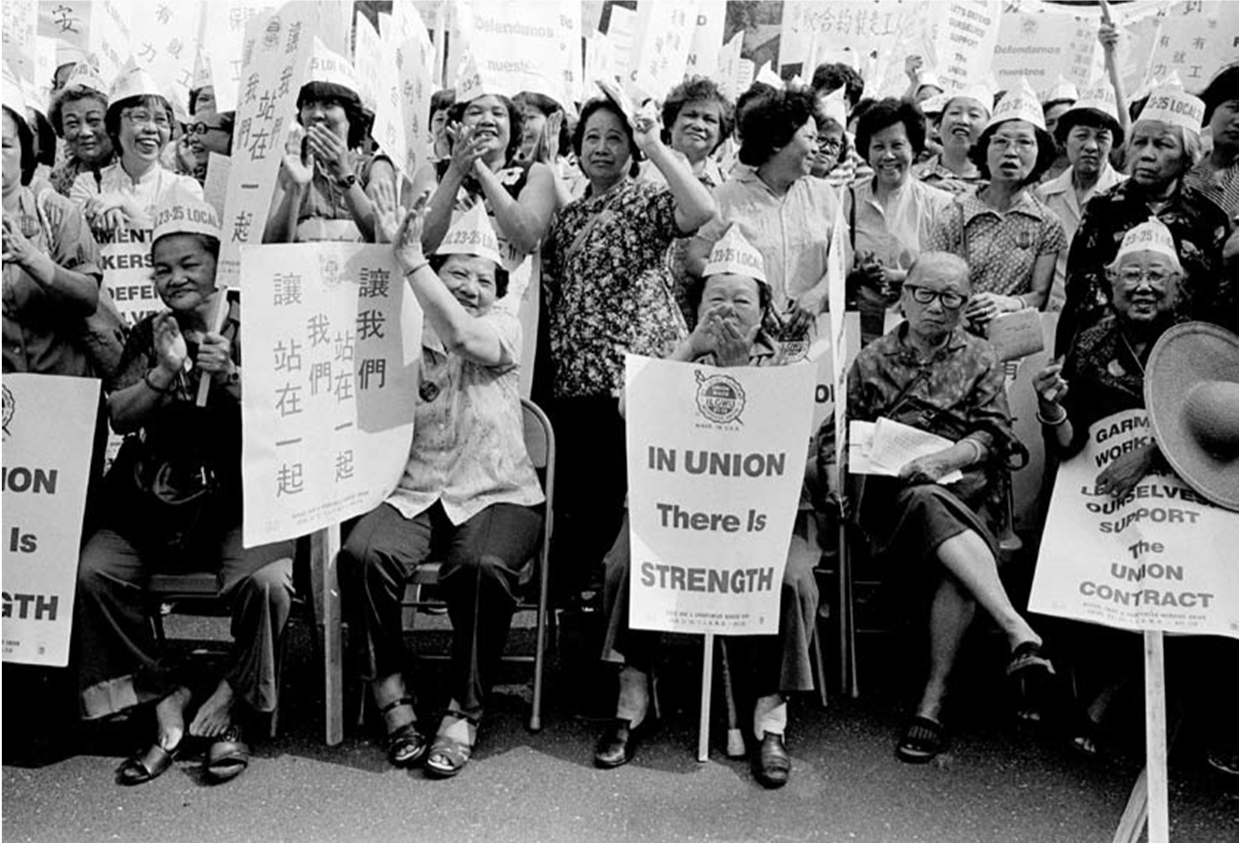AI and social justice are increasingly intertwined discussions in today’s society, highlighting the pressing need for equitable technological solutions. Renowned sociologist Ruha Benjamin emphasizes the importance of rethinking how AI impacts marginalized communities, paving the way for a future steeped in justice and inclusion. As she notes, while technological advancements are often touted as progressive, they can inadvertently perpetuate systemic inequalities, raising critical questions about who benefits from these innovations. Benjamin advocates for a human-centered design approach, urging us to consider creativity in education and the integration of sociology and technology in our dialogues about the future of AI. By ensuring diverse voices are part of the conversation, we can collectively challenge the status quo and envision a future where technology serves the greater good.
The relationship between artificial intelligence and social equity is a topic gaining significant traction among scholars and activists alike. By exploring the intersections of technology and societal values, thinkers like Ruha Benjamin propose new frameworks for understanding how innovations can either uplift or harm marginalized populations. As we delve into discussions about the role of algorithms in decision-making, it becomes paramount to consider the broader implications of these systems on social structures. The quest for a just and inclusive future necessitates a multi-disciplinary approach, blending insights from fields like sociology, education, and creative arts. This reimagining of our technological landscape calls for critical engagement, urging us to think deeply about the societal impact of AI beyond mere efficiency.
The Intersection of AI and Social Justice
In her Tanner Lectures, Ruha Benjamin argues that the influence of artificial intelligence on society must be scrutinized through the lens of social justice. She emphasizes the necessity of recognizing how AI technologies, often deemed as efficient, can disproportionately impact marginalized communities. For instance, algorithms used in facial recognition and automated decision-making systems can reinforce existing inequalities, perpetuating a cycle of oppression under the guise of technological advancement. Rather than viewing AI as an impartial arbiter, Benjamin urges us to reconsider who is benefiting from these technologies and at what cost.
The conversation surrounding AI intersects critically with issues of equity and representation. Social justice advocates must engage deeply with AI development to ensure that voices from historically marginalized populations are included. Benjamin warns against the dangers of leaving technical solutions solely in the hands of those who prioritize profit over people. By fostering dialogues that intertwine sociology and technology, there is an opportunity to create AI systems that are both innovative and just, aimed at uplifting communities rather than marginalizing them further.
Reimagining the Future of AI: Moving Beyond Dystopia
Ruha Benjamin asserts that envisioning a future shaped by AI does not have to be a dystopian exercise. Instead, it can serve as an invitation to reimagine society’s priorities. During the Tanner Lectures, she called for a collective imagination that flies in the face of current narratives heavily dominated by tech elites. By framing this discussion around creativity in education and human-centered design, Benjamin encourages a radical approach that challenges conventional thinking around technological advancement.
To move beyond dystopia, it is vital to emphasize creative inquiry rooted in the arts and humanities. This approach encourages a more holistic understanding of how perception, culture, and society shape our engagements with technology. By promoting interdisciplinary strategies that integrate technology with critical thought, we can foster a culture of innovation that is compassionate and equitable. This initiative not only broadens the scope of who contributes to the conversation but also enriches the possible outcomes of AI, allowing us to imagine futures that uplift rather than alienate.
Challenging the Myth of AI Neutrality
One of the critical points raised by Ruha Benjamin is the pervasive myth that AI technologies operate from a neutral standpoint. She argues that characterizing AI as morally neutral overlooks the complexity of social constructs and their impact on vulnerable populations. Algorithms can reproduce biases that exist within the data they are trained on, leading to detrimental consequences for those already marginalized in society. Therefore, it is essential to engage with the deeper social and historical contexts that inform these technologies rather than viewing them as mere mathematical constructs.
Furthermore, Benjamin posits that the rhetoric surrounding AI often masks its underlying implications. By presenting AI as an advancement for societal good, we may overlook the very real risks it poses to justice and equity. By challenging this narrative, advocates can work to hold technologists accountable and demand that developers prioritize not just efficiency but also ethical considerations that factor in the lives of those most affected by these systems. This shift would foster a production of AI that actively seeks to dismantle systemic barriers rather than reinforce them.
The Role of Creativity in Educational Institutions
Creativity plays a central role in shaping how we conceptualize the future of AI, as emphasized by Ruha Benjamin. In her call to action, she argues that educational institutions should prioritize creative inquiry alongside technical education, advocating for a curriculum that integrates the arts and humanities with the sciences. This synthesis is vital in cultivating a generation of thinkers who can approach technological challenges with both analytical rigor and creative imagination.
In fostering an educational environment that values creativity, schools can empower students to envision alternative futures where technology serves humanity, not the other way around. When students are encouraged to think critically about the social implications of AI, they are better equipped to challenge the status quo and propose innovative solutions that prioritize collective well-being. This approach aligns with the need to rethink traditional educational paradigms and embrace interdisciplinary learning that prepares students to tackle the complexities of a technologically advanced society.
Dismantling Barriers to Participation in AI Development
A critical takeaway from Benjamin’s lectures is the necessity to dismantle barriers that prevent diverse voices from participating in AI development. Historically, the tech sector has been dominated by a narrow demographic, often sidelining those who can provide valuable insights into the societal implications of technology. By actively seeking input from various cultural and social backgrounds, developers can create more inclusive solutions that take into account the needs of all communities.
Diversity in tech not only enriches the innovation process but also helps mitigate the risks associated with homogeneous viewpoints in decision-making. Benjamin’s advocacy for broader participation emphasizes the importance of listening to the experiences and knowledge of those who are typically marginalized. This inclusive approach can lead to more effective AI solutions that truly reflect the complexities of human society, challenging the notion that tech development is best left to a select few.
AI’s Impact on Marginalized Communities
Ruha Benjamin’s critique of AI technologies reveals profound implications for marginalized communities. She highlights how ostensibly beneficial AI developments can exacerbate existing inequalities, particularly in systems like criminal justice and healthcare. By examining the repercussions of automated decision-making, it becomes clear that these tools can reinforce discrimination and deprive vulnerable populations of their rights and opportunities. Understanding these impacts is crucial in advocating for more equitable technological practices.
Moreover, it is essential to recognize that the engagement of marginalized communities in the conversation about AI can provide critical insights into creating more ethical technologies. When those who are often sidelined in tech discussions are included, their lived experiences yield valuable perspectives that can help shape AI in a just manner. Through this inclusivity, a broader framework for accountability can be established, ensuring that future developments serve the collective good rather than exacerbate existing disparities.
Rethinking the Vision of AI Technologies
In her address, Ruha Benjamin invites us to rethink the prevailing visions of AI technologies. Instead of imagining a future dominated by corporate interests and high-stakes ambitions, she urges us to envision a world where public goods are prioritized. This shift in perspective calls for a re-examination of what constitutes progress in AI, moving away from hyper-optimism driven by tech billionaires toward a more grounded understanding that values community well-being and social equity.
This rethinking process is critical as it challenges us to consider alternatives to the current trajectory of AI development, fostering imaginations that can conceive humane solutions. By emphasizing the importance of equity and collective resilience, Benjamin’s vision for AI becomes an urgent call for a sustainable future where technology serves everyone. In this refrain from dystopian narratives, we may find renewed hope and agency to craft a future that reflects our shared aspirations rather than the ambitions of tech elites.
The Importance of Historical Context in Technology Development
Ruha Benjamin’s discussion of AI within a historical context underscores the necessity of examining not just the current landscape of technology but also its past implications. By placing AI in the continuum of social justice struggles, she emphasizes that technological advancements are often rooted in historical power dynamics that shape contemporary realities. An understanding of this history is essential for addressing how past injustices continue to inform current practices in AI.
Recognizing the historical context of technology allows us to critically assess the evolution of AI and its applications. Such insights reveal how policies and societal norms have historically marginalized certain groups, and highlight the importance of integrating this understanding into future developments. By educating current and future technologists about these critical lessons, Benjamin advocates for a tech landscape that consciously seeks to avoid the pitfalls of its predecessors and strives toward a more equitable future.
Inviting Imagination: The Role of Arts and Humanities in Tech
Throughout her lectures, Ruha Benjamin emphasizes the importance of inviting imagination back into the frame of technological advancement. By integrating the arts and humanities into discussions about AI, we can cultivate new ways of thinking that challenge the technocratic approaches often dominating these conversations. Fostering creativity within the educational sector is vital for broadening the narrative around AI and inspiring innovative solutions that prioritize human values.
Benjamin’s vision of a more imaginative approach encourages not just critical evaluation but also creative exploration of potential futures. By empowering students and innovators to engage with AI from diverse artistic and humanistic perspectives, we can equip them to think beyond the limitations of current technologies. This infusion of creativity is essential for a future that celebrates human diversity and fosters innovative solutions while addressing challenges posed by AI technologies.
Frequently Asked Questions
How does AI intersect with social justice, according to Ruha Benjamin?
Ruha Benjamin emphasizes that AI applications often perpetuate social injustices instead of alleviating them. Technologies like facial recognition can lead to wrongful arrests, and automated health systems can prioritize certain demographics over others, thereby reflecting existing societal inequalities. Understanding the sociology behind these technologies is crucial to ensure they do not reinforce oppression.
What innovative future does Ruha Benjamin envision regarding AI and social justice?
Ruha Benjamin invites us to imagine a future where AI is designed with social justice at its core, rather than being driven by the interests of tech elites. She advocates for a collective reimagining of societal systems that eliminate barriers to equity, proposing a shift towards more inclusive and humane technological solutions through the lens of creativity in education.
Why does Ruha Benjamin criticize the reliance on algorithms in AI decision-making?
Benjamin critiques the notion that algorithms are morally neutral decision-making tools. She argues that decisions based solely on mathematical computations fail to consider historical contexts and societal impacts, particularly for marginalized groups. This notion echoes concerns from historical injustices like eugenics, where similar rationales disregarded human empathy and ethical considerations.
What role does creativity play in AI and social justice advocacy as per Ruha Benjamin?
Creativity is essential in Ruha Benjamin’s view of a future where AI and social justice are aligned. She stresses the importance of integrating arts and humanities into technological discourse to foster imaginative solutions that challenge the status quo. This creative approach can help dismantle ingrained barriers, allowing for a more equitable and just society.
How can educational institutions contribute to the discussion on AI and social justice?
Ruha Benjamin recommends that universities prioritize interdisciplinary inquiries that bridge technology and social sciences. By fostering environments where creativity and critical thinking are encouraged, educational institutions can cultivate the type of knowledge necessary to counteract the drawbacks of current AI applications and spur conversations about ethical technology.
What are the dangers of viewing AI as a purely ‘efficient’ technology in social contexts?
Viewing AI as solely efficient ignores the profound social implications it carries. Ruha Benjamin warns that such a perspective can overlook the systemic injustices AI can exacerbate, such as racial profiling through surveillance tools. Efforts must focus not just on efficiency but also on justice and equity to harness AI for the collective good.
How does Ruha Benjamin propose we rethink AI’s development?
According to Ruha Benjamin, rethinking AI’s development requires a shift from tech-centric perspectives to an inclusive dialogue that involves diverse knowledge holders. She advocates for collaborative efforts that incorporate insights from sociology and the humanities in AI design, leading to solutions that not only mitigate harm but also envision an equitable future.
In what ways can AI contribute positively to social justice?
AI has the potential to enhance social justice initiatives if developed responsibly. Ruha Benjamin suggests that by applying human-centered design principles and involving diverse community voices in the creation of AI tools, technologies can address social inequalities, improve access to resources, and foster inclusive decision-making processes.
What challenges does Ruha Benjamin identify in trusting tech leaders with AI solutions for social issues?
Ruha Benjamin highlights that tech leaders often prioritize personal gain over the common good, making them unreliable stewards of social justice with AI. She cautions against following their narratives without critical examination, advocating instead for a collective responsibility to guide the ethical development and application of AI technologies.
| Key Points |
|---|
| Ruha Benjamin’s perspective on AI and social justice, stating the need for radical imagination in plotting humanity’s future. |
| Criticism of tech elites’ motivations in shaping AI futures, suggesting they may prioritize self-interest over societal good. |
| Concerns about AI technologies increasing oppression, illustrated by examples such as facial recognition leading to wrongful arrests. |
| Highlighting the dangers of relying on algorithms for societal decisions, reinforcing historical marginalization. |
| Critique of society’s default admiration for tech innovations while labeling essential public goods as unrealistic. |
| Call for broader inclusion of diverse knowledge in tech development, emphasizing the importance of arts and humanities. |
| Urging creativity and imagination in rethinking technology’s role in society, beyond mere mitigation of harms. |
Summary
AI and social justice are crucially intertwined, as highlighted by Ruha Benjamin’s compelling arguments. She advocates for a future where technology serves humanity’s collective good rather than the interests of a few billionaires. The need for a radical re-imagination of societal structures through the lens of creativity and inclusivity is paramount to ensure that AI is utilized ethically and responsibly. By engaging diverse perspectives and emphasizing arts and humanities, we can dismantle oppressive systems and envision a just society for all.











